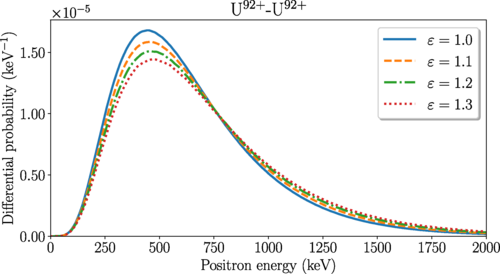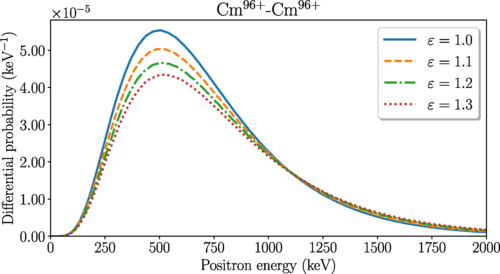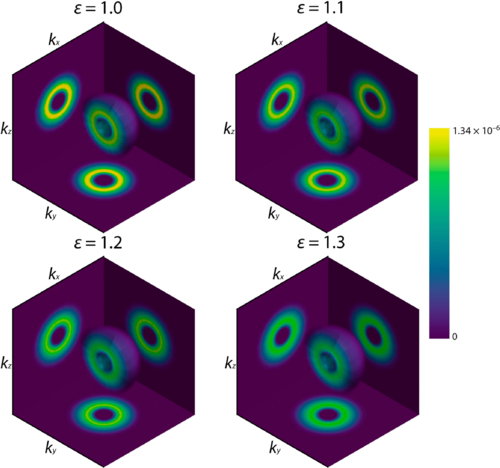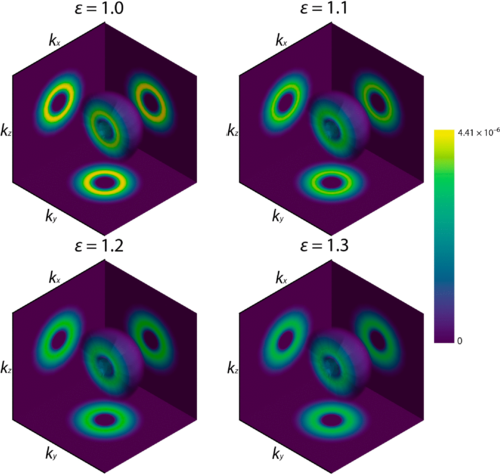N. K. Dulaev, D. A. Telnov, V. M. Shabaev, Y. S. Kozhedub, X. Ma, I. A. Maltsev, R. V. Popov , and I. I. Tupitsyn
Energy-angle differential and total probabilities of positron creation in slow supercritical collisions of two identical heavy nuclei are calculated beyond the monopole approximation. The time-dependent Dirac equation (TDDE) for positrons is solved using the generalized pseudospectral method in modified prolate spheroidal coordinates, which are well suited for description of close collisions in two-center quantum systems. In the frame of reference where the quasimolecular axis is fixed, the rotational coupling term is added to the Hamiltonian. Unlike our previous calculations, we do not discard this term and retain it when solving the TDDE. Both three-dimensional angle-resolved and angle-integrated energy distributions of outgoing positrons are obtained. Three-dimensional angle-resolved distributions exhibit a high degree of isotropy. For the collision energies in the interval 6 to 8 MeV/u, the influence of the rotational coupling on the distributions and total positron creation probabilities is quite small.

Fig. 1. Energy spectra of positrons for symmetric collisions of nuclei with Z=92 at Rmin=17.5 fm and ϵ=1.0, 1.1, 1.2, 1.3. Angular momentum projections Jz=−1/2, 1/2, and 3/2 are taken into account.

Fig. 2. Energy spectra of positrons for symmetric collisions of nuclei with Z=96 at Rmin=17.5 fm and ϵ=1.0, 1.1, 1.2, 1.3. Angular momentum projections Jz=−1/2, 1/2, and 3/2 are taken into account.

Fig. 3. Pseudocolor plot of the angle-resolved differential probabilities of positron creation corresponding to the positron momentum components kx, ky, and kz. The spectra are presented for collisions of the nuclei with Z=92 and ϵ=1.0, 1.1, 1.2, 1.3 at Rmin=17.5 fm. Angular momentum projections Jz=−1/2, 1/2, and 3/2 are taken into account. For more details, please see the text.

Fig. 4. Pseudocolor plot of the angle-resolved differential probabilities of positron creation corresponding to the positron momentum components kx, ky, and kz. The spectra are presented for collisions of the nuclei with Z=96 and ϵ=1.0, 1.1, 1.2, 1.3 at Rmin=17.5 fm. Angular momentum projections Jz=−1/2, 1/2, and 3/2 are taken into account. For more details, please see the text.

